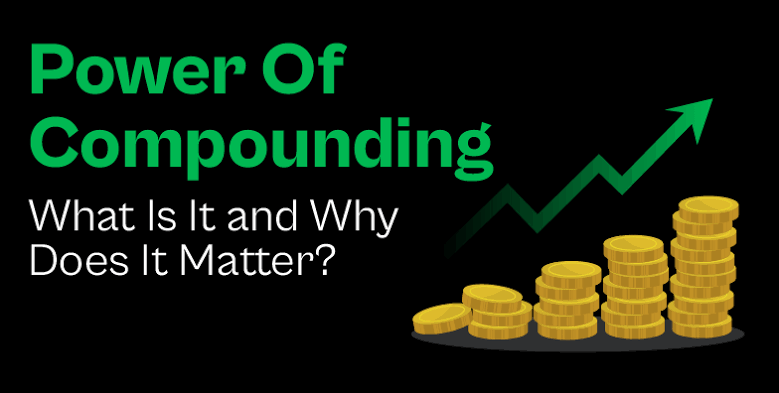Compounding is often called the eighth wonder of the world, and for good reason. It’s not just a financial formula—it’s a powerful principle that transforms regular savings into significant wealth over time. Whether you are planning for retirement, your child’s education, or long-term financial independence, compounding can help you achieve your goals with ease.
In this post, we’ll break down how compounding works using one of the most effective strategies in personal finance: the 15-15-15 Rule.
Table of Contents
What is Compounding in Finance?
Compounding is the process where your invested money earns returns, and then those returns also earn returns in the future. Over time, the snowballing effect of interest-on-interest can multiply your wealth—especially when you invest regularly and leave your money untouched.
Unlike simple interest, which pays you only on your principal, compounding rewards time and consistency. The longer you stay invested, the faster your money grows.
What is the 15-15-15 Rule in Mutual Fund Investing?
The 15-15-15 Rule is a simple, proven framework that shows how modest, consistent investing can create substantial wealth over time.
Here’s how it works:
- Invest ₹15,000 per month
- For 15 years
- At an expected annual return of 15%
What does that become?
If you follow this plan without interruption, your corpus at the end of 15 years will be over ₹1 crore.
The Power of the 15-15-15 Rule: Compounding Illustrated
Let’s break it down numerically:
- Monthly Investment: ₹15,000
- Annual Investment: ₹1,80,000
- Total Investment Over 15 Years: ₹27,00,000
- Expected Return Rate (CAGR): 15%
- Total Value After 15 Years: ₹1,00,27,000 approx
This means your wealth grows nearly four times your total contribution, thanks to the compounding effect.
Why Compounding Works So Powerfully Over Time
In the early years, compounding feels slow. The returns are smaller because your base (principal + interest) is still growing. But in the later years, returns start generating their own returns, creating what’s called the “snowball effect.”
This is why financial planners always say, “Start early. Stay invested. Don’t withdraw.”
Let’s explore what happens when you delay or extend your investment.
What If You Delay the Investment by 5 Years?
Suppose instead of starting now, you begin the same investment five years later, keeping the same ₹15,000 per month for 15 years at 15% annual returns.
Your total investment stays the same: ₹27,00,000
But your corpus will grow to only about ₹50–55 lakhs instead of ₹1 crore.
That’s a loss of nearly ₹45–50 lakhs, just because you waited.
What If You Continue for 10 More Years?
Let’s say you continue the ₹15,000/month SIP for 25 years instead of 15, keeping the same 15% annual return. In that case:
- Total Investment: ₹45,00,000 (₹15,000 x 12 x 25)
- Total Corpus: Over ₹3 crore
That’s the exponential power of compounding over time.
In other words, the last 10 years of your investment journey can generate more wealth than the first 15 years combined.
How SIPs Help You Harness the Power of Compounding
A Systematic Investment Plan (SIP) is one of the most effective ways to implement the 15-15-15 rule. With SIPs, you invest a fixed amount every month into a mutual fund. SIPs:
- Promote discipline and consistency
- Leverage rupee cost averaging
- Require no market timing
- Are ideal for long-term wealth creation
By starting early and staying invested, you make compounding work for you—even with modest contributions.
Key Takeaways from the 15-15-15 Rule
Start Early: The earlier you start, the more powerful the compounding effect becomes
Be Consistent: Monthly contributions make the habit sustainable and returns predictable
Avoid Withdrawals: Interrupting your investment disrupts compounding momentum
Time is More Important Than Amount: Even small amounts can become large if invested early and allowed to grow
Higher Returns Multiply Gains: Equity mutual funds that deliver higher long-term returns enhance the outcome
Comparison: Delay vs. Discipline
| Scenario | Start Age | Duration | Total Investment | Corpus @ 15% Return |
|---|---|---|---|---|
| On-Time Investor | 25 | 15 years | ₹27 lakhs | ₹1 crore+ |
| Delayed by 5 Years | 30 | 15 years | ₹27 lakhs | ₹50–55 lakhs |
| Long-Term Investor | 25 | 25 years | ₹45 lakhs | ₹3 crore+ |
This comparison shows that starting early matters more than investing more later.
Common FAQs About the 15-15-15 Rule and Compounding
Q1: Can I start with less than ₹15,000/month?
Yes, even ₹5,000 or ₹10,000/month works. The key is to start early and increase the amount as your income grows.
Q2: What if I can’t get a 15% return?
Even at 12% returns, the final corpus would be around ₹75–80 lakhs. The principle remains powerful—even with conservative returns.
Q3: Which mutual fund type suits the 15-15-15 plan?
Equity mutual funds, especially diversified or index funds, are ideal for long-term SIPs. Choose a fund with consistent performance and low expense ratios.
Q4: Is SIP better than a lump sum for compounding?
For salaried individuals, SIPs are more practical. Lump sum investing also benefits from compounding but requires market timing and larger capital upfront.
Conclusion: Compounding is a Mindset, Not Just a Method
The 15-15-15 rule is not just about numbers—it’s about financial behavior. It rewards consistency, patience, and the power of staying invested. Whether you’re a young NRI, a working professional, or a business owner, the earlier you start investing with discipline, the more time you give compounding to do its magic.
If you’re unsure where or how to start your SIP journey—or want help planning your long-term goals—feel free to reach out. With the right guidance, your ₹15,000/month today can become ₹1 crore+ tomorrow.

